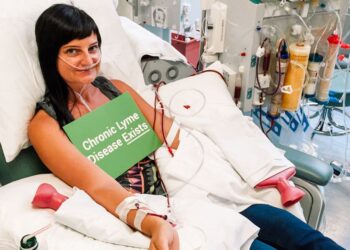TOPLINE:
In a study of pediatric mental and behavioral health (MBH)-related encounters in the emergency department (ED), the 14-item Brief Rating of Aggression by Children and Adolescents (BRACHA) tool as well as its shortened 5-item version (BRACHA-S) showed strong predictive ability for pediatric agitation that required intervention.
METHODOLOGY:
- This retrospective cohort study included records of patients aged 5-18 years who were evaluated for MBH concerns in the ED from 2012 to 2020 and who completed a BRACHA assessment.
- A total of 32,906 MBH-related ED visits were analyzed.
- The primary outcome was agitation requiring intervention, defined as episodes requiring physical or pharmacologic management.
- Predictive accuracy was evaluated using the area under the receiver operating characteristic curve (AUROC), and Least Absolute Shrinkage and Selection Operator regression was used to develop BRACHA-S.
- BRACHA-S scores were used for risk stratification of visits into low-risk (scores 0-1), moderate-risk (scores 2-3), and high-risk (scores 4-5) tiers.
TAKEAWAY:
- About 10.7% of visits involved patients with agitation requiring intervention.
- BRACHA could strongly predict agitation requiring intervention (AUROC, 0.81; 95% CI, 0.79-0.82). BRACHA-S demonstrated similar predictive accuracy (AUROC, 0.80; 95% CI, 0.78-0.81).
- Compared with the low-risk tier, the moderate-risk and high-risk tiers showed risk ratios for agitation requiring intervention of 6 and 14, respectively.
IN PRACTICE:
“This study adds evidence on the accuracy of both the original 14-item Brief Rating of Aggression by Children and Adolescents and the novel 5-item item Brief Rating of Aggression by Children and Adolescents, shortened version, in predicting agitation requiring intervention in the ED,” the authors wrote. “Implementing these tools for early risk assessment may enhance patient safety and optimize resource allocation in emergency settings,” they added.
SOURCE:
The study was led by Bijan Ketabchi, MD, MPH, Children’s Hospital of Philadelphia, Philadelphia, and Lynn Babcock, MD, MS, Cincinnati Children’s Hospital Medical Center, Cincinnati. It was published online on June 11, 2025, in Pediatrics.
LIMITATIONS:
The study’s reliance on retrospective electronic health record data meant its findings might have been influenced by limitations in documentation quality and completeness. The absence of a structured agitation assessment prevented the evaluation of agitation severity, and variations in healthcare providers’ perceptions may have introduced bias in determining intervention needs. Being limited to a single regional pediatric referral center may have restricted the generalizability of the findings. Some patients may have required intervention before BRACHA assessment, potentially affecting its predictive value.
DISCLOSURES:
This study was funded by Cincinnati Children’s Hospital Medical Center. The Center for Clinical and Translational Science and Training at the University of Cincinnati provided services, including the REDCap database, through a National Institutes of Health Clinical and Translational Science Award. The authors reported having no conflicts of interest.
This article was created using several editorial tools, including AI, as part of the process. Human editors reviewed this content before publication.
Source link : https://www.medscape.com/viewarticle/new-tool-predicts-pediatric-agitation-risk-emergency-2025a1000ikx?src=rss
Author :
Publish date : 2025-07-14 15:13:00
Copyright for syndicated content belongs to the linked Source.







